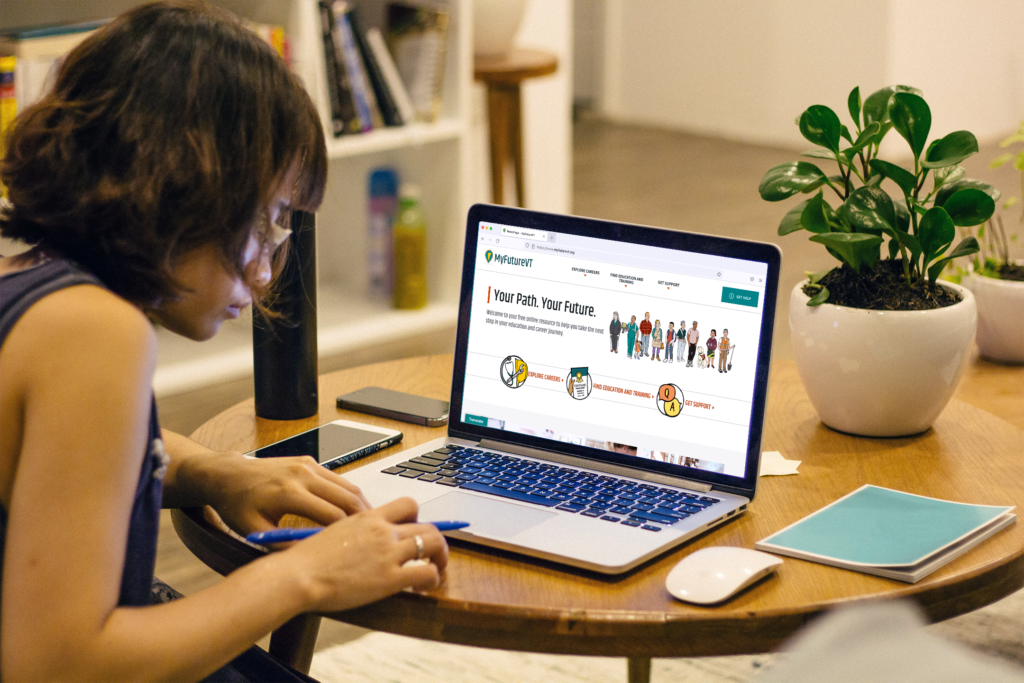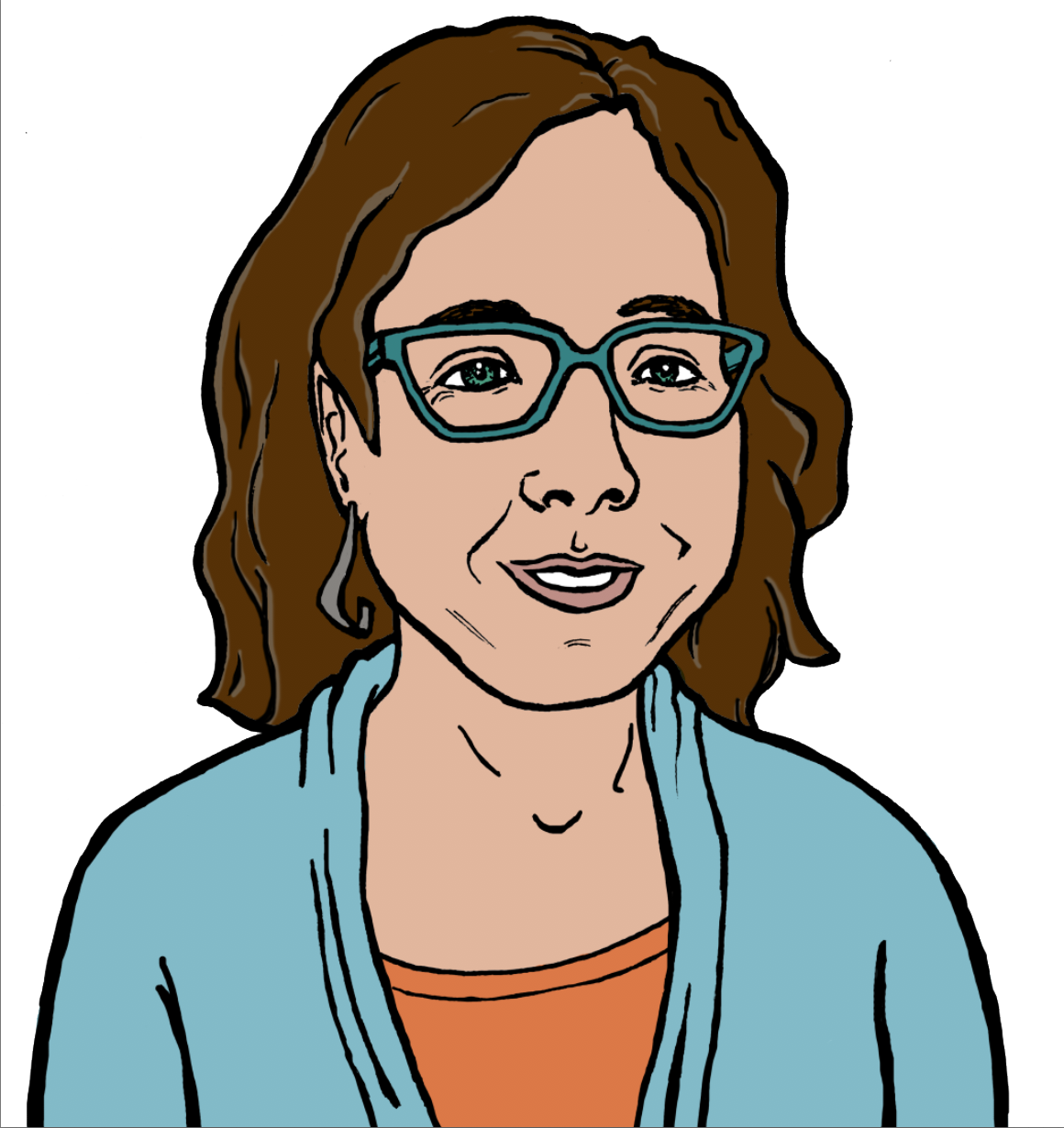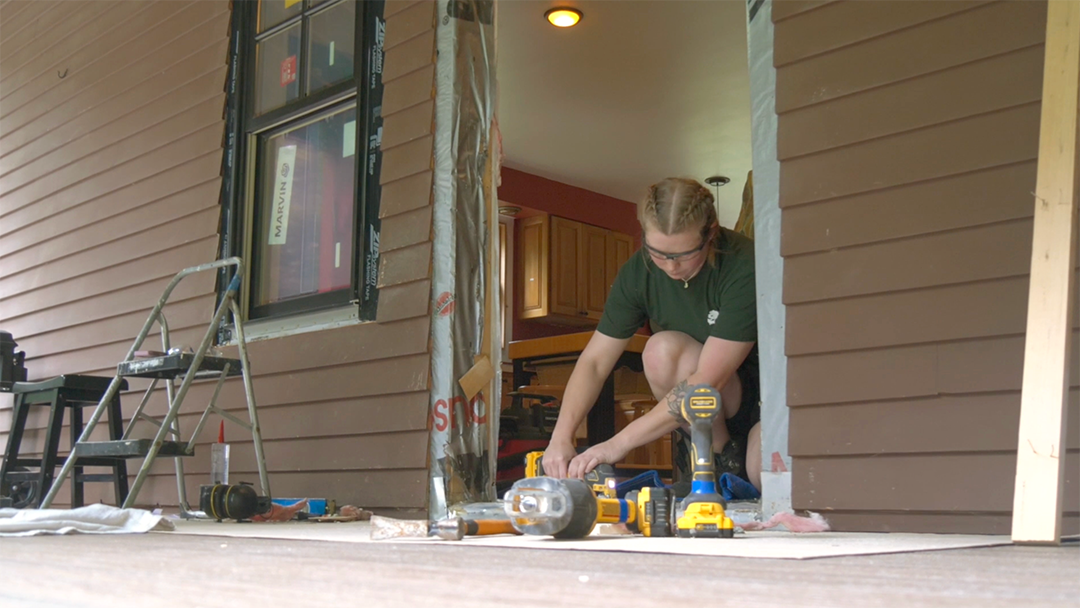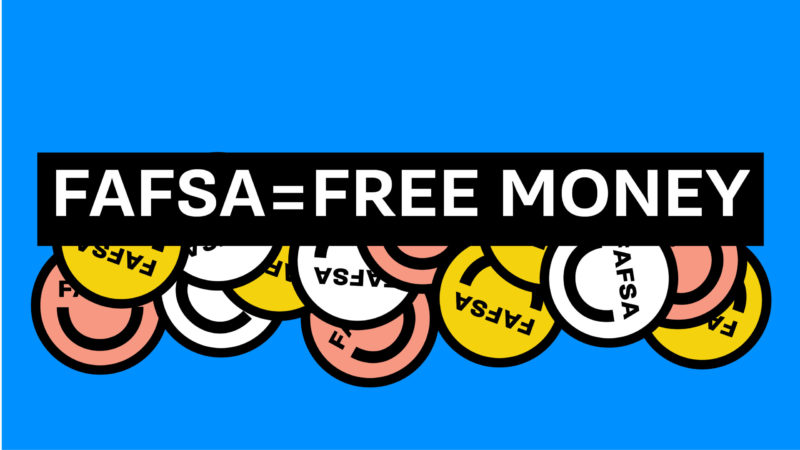How to get started on your education journey

Navigating the postsecondary education landscape can feel overwhelming. It’s normal to ask questions like: what should I study, what kind of program should I enroll in, or what type of credential should I earn and how do I know it’s going to get me the job I want?
The answers to these questions will depend on your lifestyle and goals, and can be identified in just a few steps — with the help of free, online resources like MyFutureVT.org from Advance Vermont, and the professionals at the Vermont Student Assistance Corporation (VSAC).
Step 1: Figure out your career plans
Many people prefer to know what type of career they would like to have before they enroll in an education program — while others prefer to figure it out along the way. In any case, you should have at least a loose idea of what you’re interested in. If you need help figuring out your interests or what career might be right for you, MyFutureVT has a step-by-step guide.
Step 2: Identify your educational goals
Take a moment to ask yourself two questions.
- What does an education or training program need to look like to fit into my life?
- What does an education or training program need to include to take me closer to my goals?
There are no right or wrong answers because everyone is different. Your focus might be on earning a credential as quickly as possible, or on pursuing a path to get you closer to your career goals — or maybe you need to prioritize fitting a program into your busy schedule and lifestyle.
Step 3: Learn about education and training pathways
Learn about your education and training options on MyFutureVT’s Education and Training Pathways page. This page will be helpful to understand how long different programs last, how and where you will learn, and what level of training you will get. You can also see the difference between certificates, apprenticeships, associate degrees, bachelor’s degrees, and more.
Step 4: Try to not get overwhelmed by cost
Education and training after high school can be expensive. But there are many options to make your education journey cheaper — or even free. MyFutureVT provides an overview of the ways to keep costs down: From various types of financial aid, to ways to earn free college credit in high school, to how to gain credit for the skills you already have. Think and talk through all of your options with a VSAC counselor before deciding your education is too expensive to pursue.
Step 5: Explore education and training programs in Vermont
MyFutureVT’s searchable education and training database (powered by Advance Vermont’s Vermont Credential Transparency Project), is an expanding collection of all credential programs in Vermont. You can use this opportunity to filter by how you answered the two questions from Step 2. Once you’ve found one or more programs that interest you:
Investigate. Learn more about each program to see if it feels like a good fit. Find all the key details, like when and where the program is offered and how long it takes, then click over to the school’s website for more information.
Prepare. You might be feeling overwhelmed by the sticker price of the programs you are interested in — this makes sense! Remember that the price is the cost before any financial aid. Get more help navigating this process from VSAC.Take the leap. Schedule an appointment with an admissions counselor to learn more, or apply to a program!




